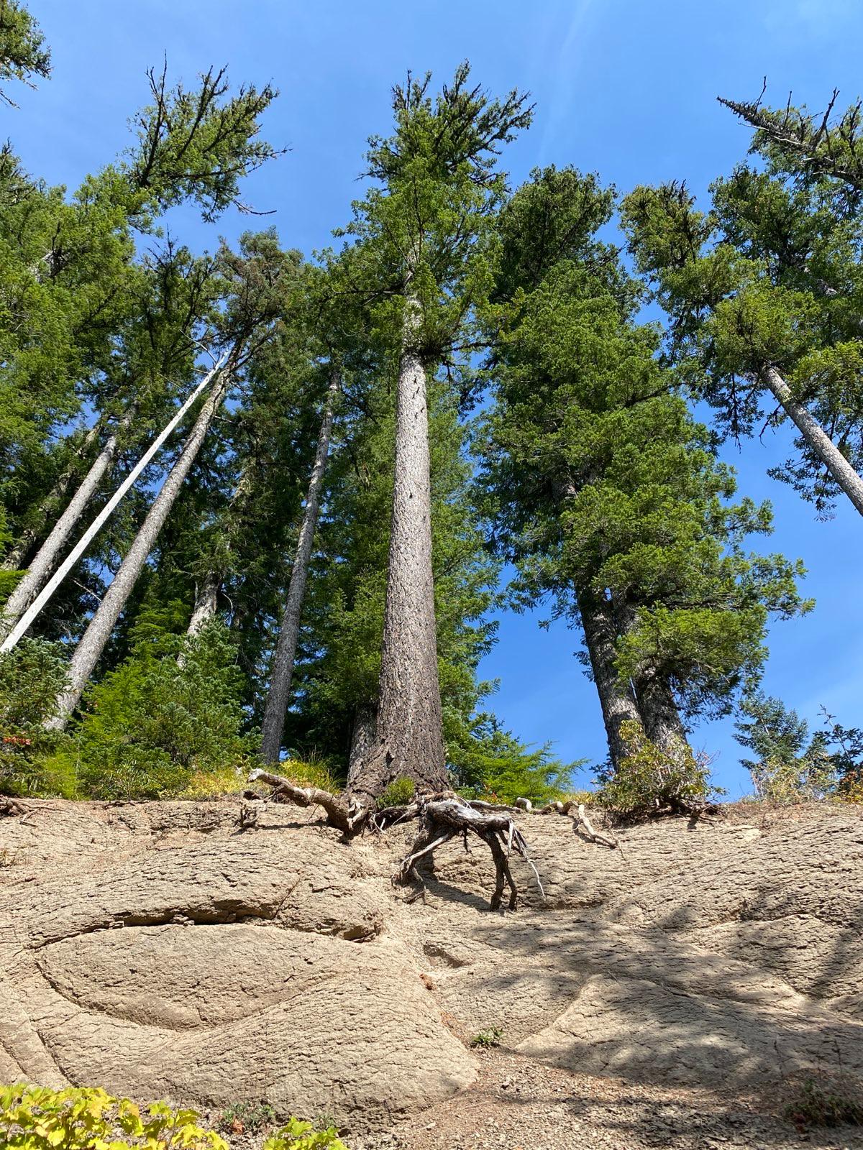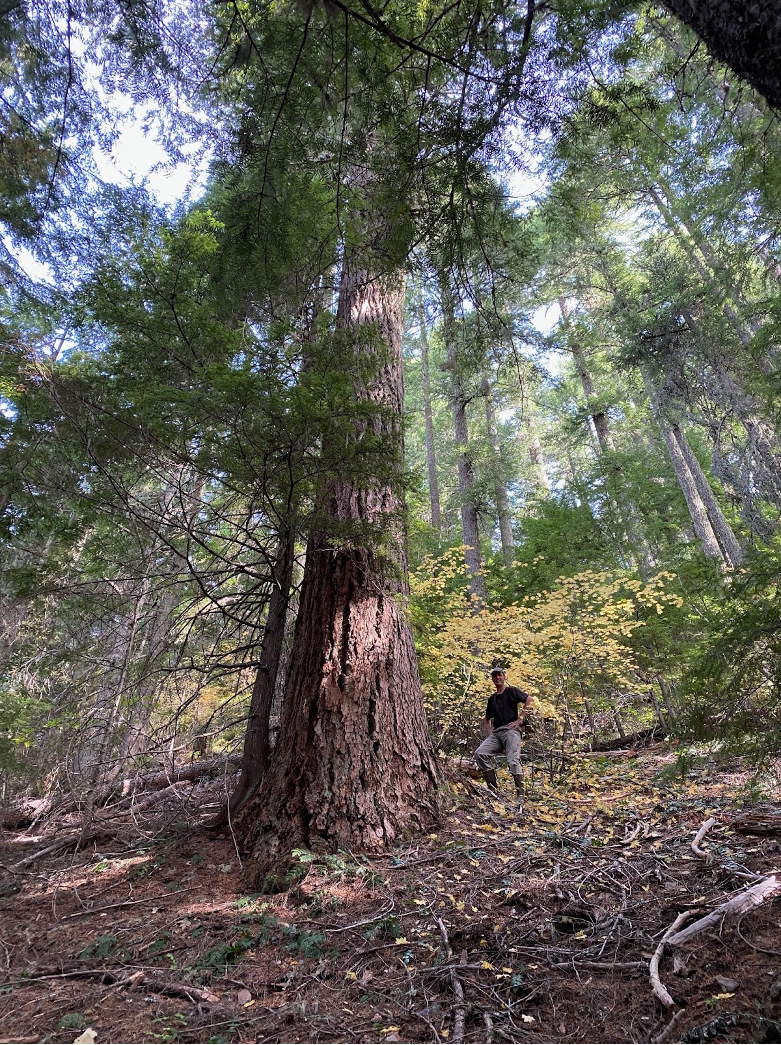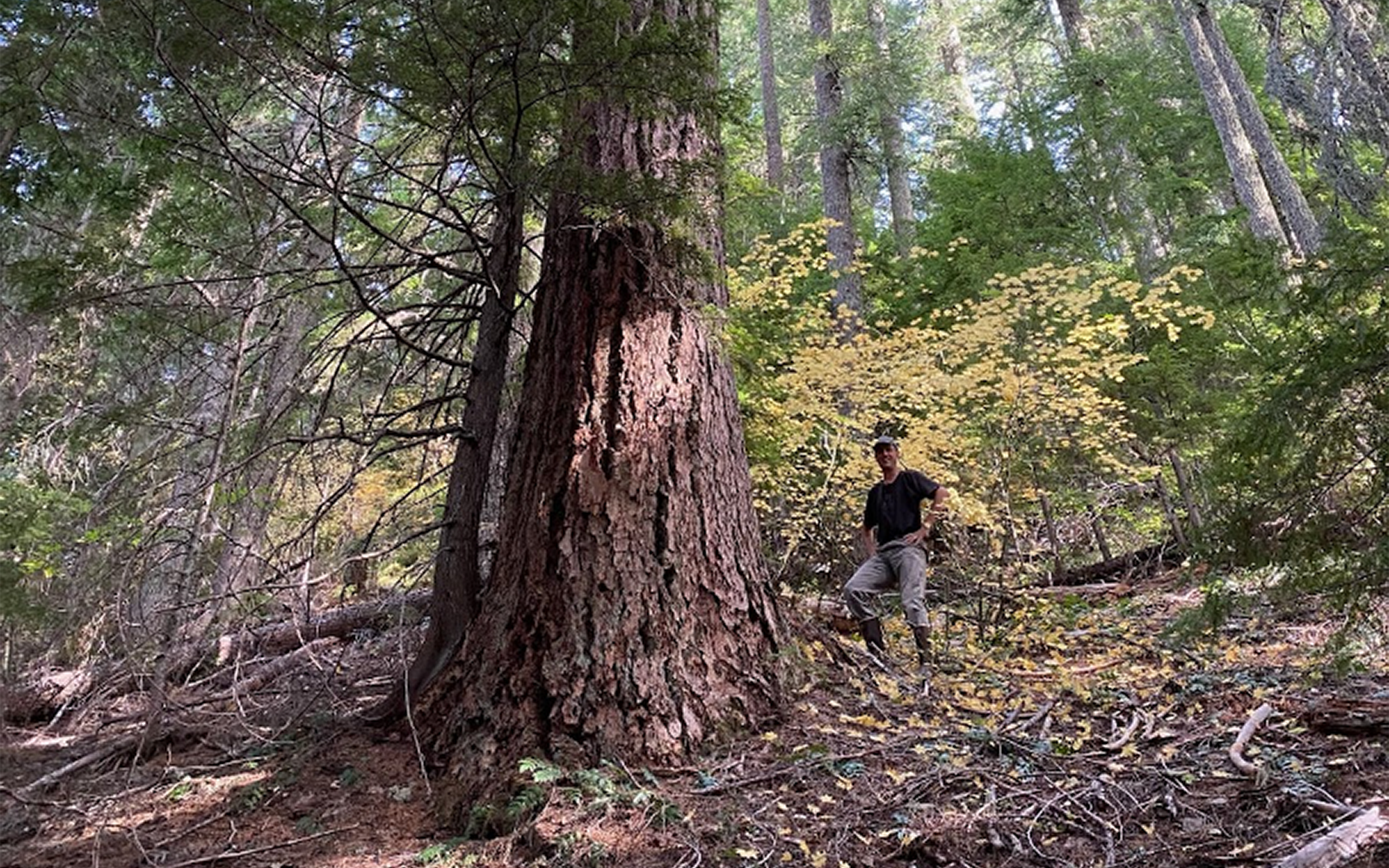— written by WildCAT, Abe.
On a bright October morning I had the honor of joining a group of volunteers and staff from Cascadia Wildlands for a day of field checking in the woods.
Field Checking is the tactic of comparing existing conditions in the forest with conditions alleged in Forest Service sale proposals. Often, these proposals irresponsibly misrepresent the state of the forest. Unmarked waterways, old-growth stands, and crucial wildlife are invisible to the abstract paperwork of resource extraction. We’re out here to see if what they’re saying about the forest is true. This was my first time, and the Cascadia Wildlands crew did a great job of orienting me to the task.
We gathered on a forest road spur in the Willamette National Forest north of Blue River, where the Calloway Timber Sale is currently targeting 8,757 acres of Pacific Northwest forest for harvest. Caravanning up the road we set out to inspect the first unit, which was to our right as we ascended upwards of 3000 feet of elevation.
This unit had clearly been previously logged. Stumps and overgrown root bulbs dotted the land as it inclined to a nearby ridge. While this was not an old-growth forest, we set foot into the unit to make note of its many other defining ecological characteristics — various native plant and fungal species, and a wide range of tree species. Then we came quickly upon a large clearing.
This unit (which we found through cores to have trees of 30-40 years of age) and units like it, are often marked for harvest as a thinning measure, with the stated aim of reducing the unit’s fire risk, or increasing ecological functionality. This tactic in itself is questionable. We found this unit in particular to already contain a clearing, and did not appear otherwise to be overly dense in its growth pattern. So, the Forest Service’s rationale for harvest on this count was put into question.
We continued our journey through the forest and made note of a variety of tree species. The site contained noble fir, western hemlock, douglas-fir, and western redcedar. Species diversity, or stand complexity, is a sign of a healthy forest — one that does not require intervention to be valuable to local fauna. We noticed plentiful signs of mountain beavers, woodpecker foraging and elk scat.
As we reached the top of the ridge, we made note of the significant increase in slope on the downhill side. Certainly greater than 45 degrees. Steep slopes make for poor harvest candidates. The risk of post-logging erosion and landslides is significant. The potential damage to the ecological health of this ridge and adjacent areas could potentially preclude this unit from any harvest activities.
As noted earlier, the stand contained trees approximately 30-40 years in age. Younger trees at relatively low density lessen the commercial value of the stand. Low density trees, presence of clearings, a steep slope… This was starting to look like a unit the Forest Service should re-evaluate.
Having completed our survey of the first unit, we made our way towards the second. The road that should have taken us into the unit was unrecognizable, it was full of brush, presumably unmaintained for at least a decade or two. Undeterred, the group decided to carry on and hike down the unmaintained road.
As we make progress through the brush, it’s clear that the expired roadway had become a landslide in the recent past. Above us, old-growth Douglas-fir bare their roots to a steep eroded hillside, seeming to be clinging for dear life to the crumbling slope beneath them. Any harvesting activity on this unit would require extensive repair to a road already incredibly ill-positioned to begin with. We make note of these conditions.

The group tacked up into this adjacent old-growth, making quicker time than the eroded roadway allowed. Beautiful, ancient trees extended hundreds of feet into the sky above us, while vine maples sparkled in their fall yellow foliage. Chanterelles peaked out of the duff and the whole group moved in quiet awe, tilting our ears towards a woodpecker’s call. The slope steepened and the way proved difficult, but we continued with our day, taking measurements including DBH (Diameter at Breast Height) and core samples.
This area contained some compelling signs of a slight draw, as earth in a nearby fold in the landscape was beginning to be pushed away from the underlying rock with recurrent flushes. I found myself enamored with the complexity of the forest that we saw that day. Our notes are comprehensive and should well impress upon the Forest Service the incompatibility of this area’s true ecological state with their harvest goals. Thank you to the Cascadia Wildlands crew that shared their knowledge of field checking with me, thank you to my fellow volunteers who became new friends, and thank you to the forest for its breathtaking beauty. There are 361 units in the Calloway sale slated for harvest – and ample evidence these forest lands are incompatible with a harvest regime.


